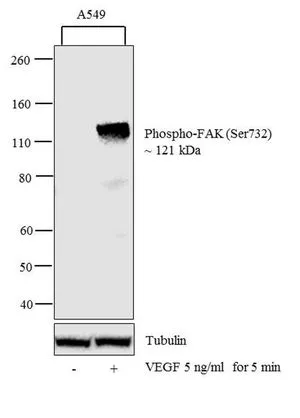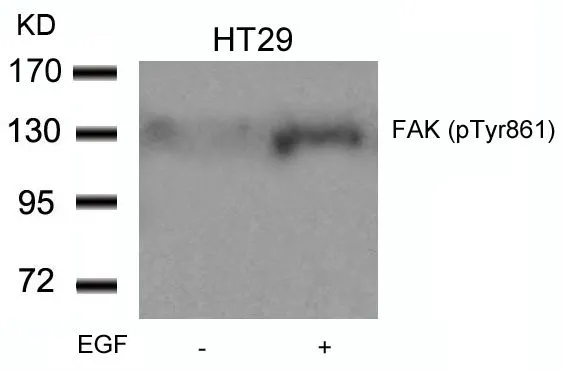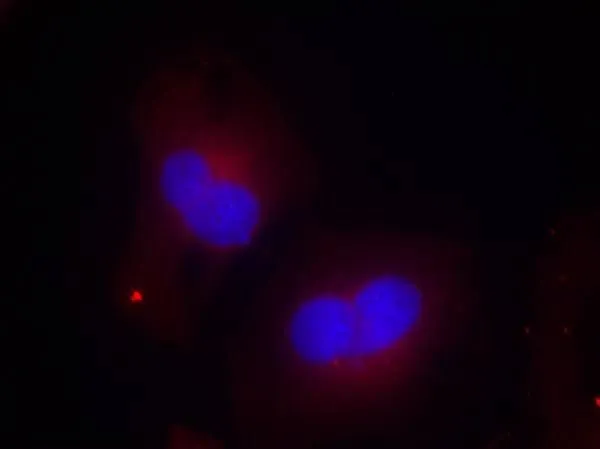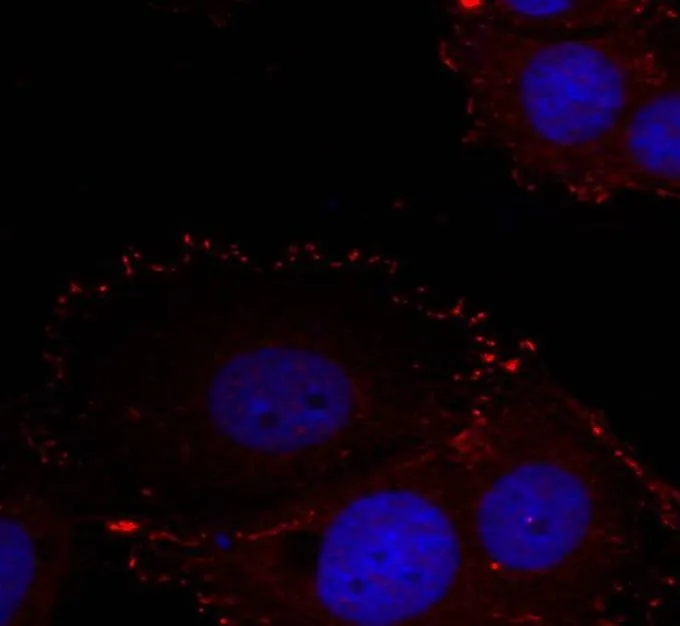FAK (phospho Tyr397) antibody
GTX129840
ApplicationsImmunoFluorescence, Western Blot, ImmunoCytoChemistry, ImmunoHistoChemistry, ImmunoHistoChemistry Paraffin
Product group Antibodies
TargetPTK2
Overview
- SupplierGeneTex
- Product NameFAK (phospho Tyr397) antibody
- Delivery Days Customer9
- Application Supplier NoteWB: 1:500-1:3000. ICC/IF: 1:100-1:1000. *Optimal dilutions/concentrations should be determined by the researcher.Not tested in other applications.
- ApplicationsImmunoFluorescence, Western Blot, ImmunoCytoChemistry, ImmunoHistoChemistry, ImmunoHistoChemistry Paraffin
- CertificationResearch Use Only
- ClonalityPolyclonal
- Concentration0.17 mg/ml
- ConjugateUnconjugated
- Gene ID5747
- Target namePTK2
- Target descriptionprotein tyrosine kinase 2
- Target synonymsFADK; FADK 1; FAK; FAK1; FAK-related non-kinase polypeptide; focal adhesion kinase 1; focal adhesion kinase-related nonkinase; FRNK; p125FAK; pp125FAK; PPP1R71; protein phosphatase 1 regulatory subunit 71; PTK2 protein tyrosine kinase 2
- HostRabbit
- IsotypeIgG
- Protein IDQ05397
- Protein NameFocal adhesion kinase 1
- Scientific DescriptionThis gene encodes a cytoplasmic protein tyrosine kinase which is found concentrated in the focal adhesions that form between cells growing in the presence of extracellular matrix constituents. The encoded protein is a member of the FAK subfamily of protein tyrosine kinases but lacks significant sequence similarity to kinases from other subfamilies. Activation of this gene may be an important early step in cell growth and intracellular signal transduction pathways triggered in response to certain neural peptides or to cell interactions with the extracellular matrix. At least four transcript variants encoding four different isoforms have been found for this gene, but the full-length natures of only two of them have been determined. [provided by RefSeq]
- Storage Instruction-20°C or -80°C,2°C to 8°C
- UNSPSC12352203
References
- Synergistic Combination of Luteolin and Asiatic Acid on Cervical Cancer In Vitro and In Vivo.Read more
- Anticancer Effects and Molecular Mechanisms of Apigenin in Cervical Cancer Cells. Chen YH et al., 2022 Apr 4, Cancers (Basel)Read more
- FAK Regulates VEGFR2 Expression and Promotes Angiogenesis in Triple-Negative Breast Cancer. Shiau JP et al., 2021 Nov 29, BiomedicinesRead more
- A Fucoxanthinol Induces Apoptosis in a Pancreatic Intraepithelial Neoplasia Cell. Terasaki M et al., 2021 Mar-Apr, Cancer Genomics ProteomicsRead more
- Dexamethasone accelerates muscle regeneration by modulating kinesin-1-mediated focal adhesion signals. Lin JW et al., 2021 Feb 17, Cell Death DiscovRead more
- A Marine Carotenoid of Fucoxanthinol Accelerates the Growth of Human Pancreatic Cancer PANC-1 Cells. Terasaki M et al., 2022, Nutr CancerRead more
- Chaperonin-Containing TCP-1 Promotes Cancer Chemoresistance and Metastasis through the AKT-GSK3beta-beta-Catenin and XIAP-Survivin Pathways. Chang YX et al., 2020 Dec 21, Cancers (Basel)Read more
- Effects of WSG, a polysaccharide from Ganoderma lucidum, on suppressing cell growth and mobility of lung cancer. Hsu WH et al., 2020 Dec 15, Int J Biol MacromolRead more
- Progesterone receptor membrane component 1 is involved in oral cancer cell metastasis. Huang HY et al., 2020 Sep, J Cell Mol MedRead more
- CXCL1/CXCR2 Paracrine Axis Contributes to Lung Metastasis in Osteosarcoma. Chao CC et al., 2020 Feb 17, Cancers (Basel)Read more


![FACS analysis of Raji cells using GTX83323 FAK antibody [10H7E9]. Green : FAK Purple : negative control](https://www.genetex.com/upload/website/prouct_img/normal/GTX83323/GTX83323_20170912_FACS_w_23061322_838.webp)


